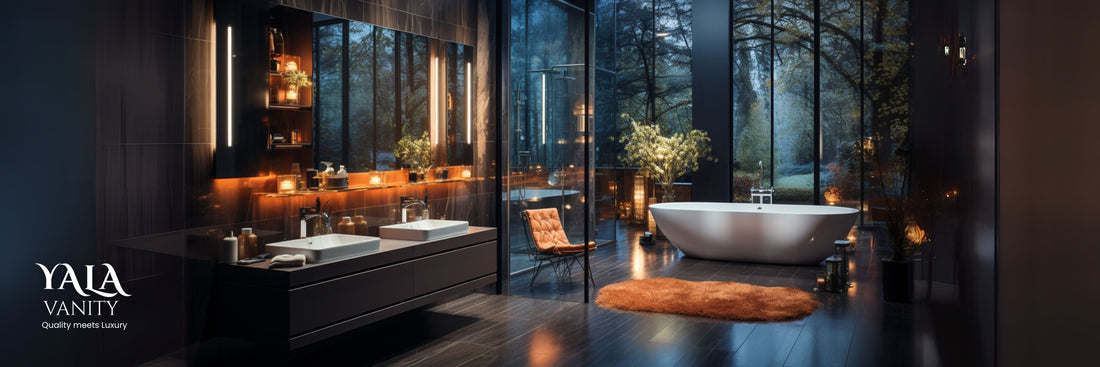When designing a bathroom that feels serene, modern, and tailored to your lifestyle, the choice between a floating vanity and a freestanding one becomes more than a design preference—it’s a decision that impacts your space's function, flow, and overall feel.
If you’re someone like Sarah, who values elegance, quality, and thoughtful design, it’s important to choose a vanity style that complements both your aesthetic vision and practical needs. Below, we break down the pros and cons of floating and freestanding vanities to help you decide which one aligns best with your spa-worthy bathroom goals.
Floating Vanities: Minimalist & Modern
What It Is:
A floating vanity is wall-mounted, creating a clean, open look by freeing up floor space underneath. It’s often seen in luxury hotels and modern designer homes.
Pros:
- Visually Lightens the Room: Creates an airy, spacious feel—ideal for smaller or minimalist bathrooms.
- Customizable Height: Can be mounted at a height that suits your lifestyle.
- Modern Appeal: Clean lines and architectural detail make this a designer favorite.
- Easy Floor Cleaning: No base to mop around or under—perfect for tidy spaces.
Cons:
- Limited Storage: Typically has less internal storage than freestanding options.
- Installation Complexity: Requires strong wall support and expert installation.
- Higher Upfront Cost: The design and mounting process may be more expensive.
Best For: Design-conscious homeowners, modern interiors, smaller spaces that need to feel open
Sarah’s Tip: Pair a floating vanity with a statement vessel sink and backlit mirror for a boutique hotel look.
Freestanding Vanities: Classic & Functional
What It Is:
A freestanding vanity sits directly on the floor, like a traditional cabinet. It can range from simple designs to elaborate pieces that resemble custom furniture.
Pros:
- Ample Storage: More drawers and compartments make it easier to stay organized.
- Variety of Styles: From classic to contemporary, there are endless design options.
- Easier Installation: Typically simpler and less expensive to install.
- Built-In Presence: Offers a grounded, substantial look—especially in larger bathrooms.
Cons:
- Can Feel Bulky: May dominate smaller bathrooms if not proportioned correctly.
-
Harder to Clean Around: Baseboards and tight floor gaps can trap dust.
Best For: Spacious bathrooms, traditional or transitional interiors, high-storage needs
Sarah’s Tip: Look for freestanding vanities made with solid wood and Italian marble countertops for a timeless, luxurious statement.
So, Which Is Better?
There’s no one-size-fits-all answer. The “best” vanity depends on your bathroom layout, storage needs, and personal style. Floating vanities lend themselves to clean, contemporary aesthetics, while freestanding vanities deliver timeless elegance and practical storage. For Sarah—and customers like her—it’s all about balance: beauty, longevity, and function.
If you're leaning toward a minimalist, elevated look, a floating vanity is the way to go. If you're all about classic luxury and everyday convenience, freestanding is your best bet.
Final Thought:
Whether you choose a floating or freestanding vanity, what matters most is the quality of materials, craftsmanship, and how well it reflects your personal sanctuary. At [Your Brand], we offer both styles in designer-curated collections crafted from solid wood, stone, and other premium materials.






